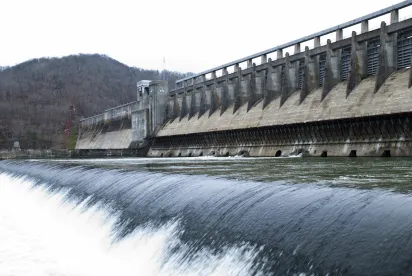On April 21, 2020, the United States Environmental Protection Agency (US EPA) and the United States Army Corps of Engineers (Corps) published, in the Federal Register, their final rule (2020 Rule) revising the definition of “waters of the United States” and narrowing the scope of waters subject to federal regulation under the Clean Water Act. The rule was signed by Administrator Wheeler on January 23, 2020, but publication was withheld until now. The 2020 Rule represents the culmination of the Trump Administration’s efforts to revisit, and revise or rescind, the controversial revisions to the definition of “waters of the United States” promulgated during the Obama Administration (2015 Rule). The 2020 Rule, controversial as well, will become effective sixty (60) days after publication in the Federal Register, which is June 22, 2020.
The President’s Executive Order
In one of the earliest Executive Orders issued by the incoming Administration, President Trump issued Executive Order 13778 entitled Restoring the Rule of Law, Federalism, and Economic Growth by Reviewing the “Waters of the United States” Rule (Executive Order). The Executive Order directed US EPA and the Corps to review the 2015 Rule, and rescind or revise the 2015 Rule, as appropriate. The Executive Order also directed the agencies to “consider interpreting the term ‘navigable waters’ … in a manner consistent with Justice Antonin Scalia’s opinion in Rapanos v. United States, 547 U.S. 715 (2006),” rather than the “significant nexus” test articulated by Justice Kennedy in his concurring opinion in that same case, which provided the underpinnings for the 2015 Rule. The 2015 Rule had been the subject of intense criticism as a result of its expansive and complex nature, leaving the regulated community with little certainty as to their obligations.
US EPA’s and the Corps’ Two-Step Rulemaking
US EPA and the Corps thereafter announced their intent to implement the Executive Order in two steps, the first step being repeal of the 2015 Rule and recodification of the regulations in effect prior to the 2015 Rule (Step One) and the second step being finalization of a new rule (Step Two). Step One was accomplished in October of 2020. See 84 Fed Reg. 56626 (October 22, 2019). As a result, the regulations defining the scope of federal jurisdiction currently are those portions of the rules as they existed prior to the amendments promulgated in the 2015 Rule. Step Two has now been accomplished with publication of the 2020 Rule and will replace the Step One Rule when effective.
The 2020 Final Rule
What’s Included
The 2020 Rule defines four (4) categories of waters as jurisdictional. The first are those waters which are traditionally thought of as “waters of the United States,” those being the territorial seas and traditional navigable waters. 33 CFR 328.3(a). The second are perennial and intermittent tributaries that contribute surface water flow to the territorial seas and navigable waters either directly or indirectly through other jurisdictional waters. 33 CFR 328.3(b). Notably, “ephemeral” streams are not included in the definition, a significant departure from the 2015 Rule. The third are lakes, ponds, and impoundments that are standing bodies of water that contribute surface water flow in a typical year to a territorial sea or a traditional navigable water either directly or through another jurisdictional water. 33 CFR 328.3(c). The fourth are wetlands that abut a territorial sea or traditional navigable water, or other jurisdictional water and that are inundated by flooding by a jurisdictional water in a typical year, are physically separated from a jurisdictional water by a natural berm, dune or similar feature or physically separated by an artificial structure so long as that artificial structure allows for a direct hydrologic surface connection between the wetlands and a jurisdictional water in a typical year. 33 CFR 328.3(c). This is an important distinction from the 2015 Rule, which asserted federal jurisdiction over certain “adjacent” wetlands that were (1) within the 100 feet of the ordinary high water mark of a tributary or navigable water; (2) within the 100-year floodplain of a tributary or navigable water; or (3) located within 1,500 feet of the Great Lakes or a high tide line. The 2020 Rule covers a much narrower set of wetlands.
The surface water flow is gauged in the “typical year” which is defined to mean “when precipitation and other climatic variables are within the normal periodic range (e.g. seasonally, annually) for the geographic area of the applicable aquatic resource based on a rolling thirty-year period.” 33 CFR 328.3(c)(13). The “significant nexus test” with its reliance on whether a water has a significant nexus to another jurisdictional water has been abandoned in favor of this categorical approach.
What’s Excluded
All waters that do not fall within one of the four (4) categories outlined above are not jurisdictional. US EPA and the Corps also took the opportunity to specifically identify a number of waters which are not subject to jurisdiction. In fact, the list of exclusions is longer than the list of inclusions. 33 CFR 328.3 provides:
(b) Non-jurisdictional waters. The following are not “waters of the United States”;
- Waters or water features that are not identified in paragraph (a)(1), (2), (3), or (4) of this section;
- Groundwater, including groundwater drained through subsurface drainage systems;
- Ephemeral features, including ephemeral streams, swales, gullies, rills, and pools;
- Diffuse stormwater run-off and directional sheet flow over upland;
- Ditches that are not waters identified in paragraph (a)(1) or (2) of this section, and those portions of ditches constructed in waters identified in paragraph (a)(4) of this section that do not satisfy the conditions of paragraph (c)(1) of this section;
- Prior converted cropland;
- Artificially irrigated areas, including fields flooded for agricultural production, that would revert to upland should application of irrigation water to that area cease;
- Artificial lakes and ponds, including water storage reservoirs and farm, irrigation, stock watering, and log cleaning ponds, constructed or excavated in upland or in non-jurisdictional waters, so long as those artificial lakes and ponds are not impoundments of jurisdictional waters that meet the conditions of paragraph (c)(6) of this section;
- Water-filled depressions constructed or excavated in upland or in non-jurisdictional waters incidental to mining or construction activity, and pits excavated in upland or in non-jurisdictional waters for the purpose of obtaining fill, sand, or gravel;
- Stormwater control features constructed or excavated in upland or in non-jurisdictional waters to convey, treat, infiltrate, or store stormwater run-off;
- Groundwater recharge, water reuse, and wastewater recycling structures, including detention, retention, and infiltration basins and ponds, constructed or excavated in upland or in non-jurisdictional waters; and
- Wastewater treatment systems.
Notably, definitions for the terms “ephemeral” and “prior converted cropland” were added to the rule. “Ephemeral” is now defined as “surface water flowing or pooling only in direct response to precipitation (e.g. rain or snow fall).” “Prior converted cropland” is defined as “any area that, prior to December 23, 1985, was drained or otherwise manipulated for the purpose, or having the effect, of making production of an agricultural product possible…” but does not include prior converted cropland that has been abandoned. However, the definition assures that US EPA will have the final authority to determine whether prior converted cropland has been abandoned. 33 CFR 328.3(c)(1).
Practical Implications
The 2020 Rule narrows the scope of federal jurisdiction under the Clean Water Act, particularly with respect to adjacent wetlands and ephemeral streams, and also abandons the “significant nexus text” in the 2015 Rule which allowed for a broader and more ambiguous range of waters to be included within the definition. In doing so, it establishes clearer categories of waters to be regulated, along with associated definitions. It also codifies a number of important exemptions (ephemeral streams, ditches, prior converted cropland, artificial lakes and ponds). The practical implications of the 2020 Rule remain to be seen. Many states already have programs that are more stringent than federal program requirements and more states may respond to fill perceived gaps in federal regulation (e.g. isolated wetlands and ephemeral streams). What is clear, however, is that litigation will likely follow as it has with respect to every other effort to define “waters of the United States” for purposes of the Clean Water Act.




 />i
/>i

